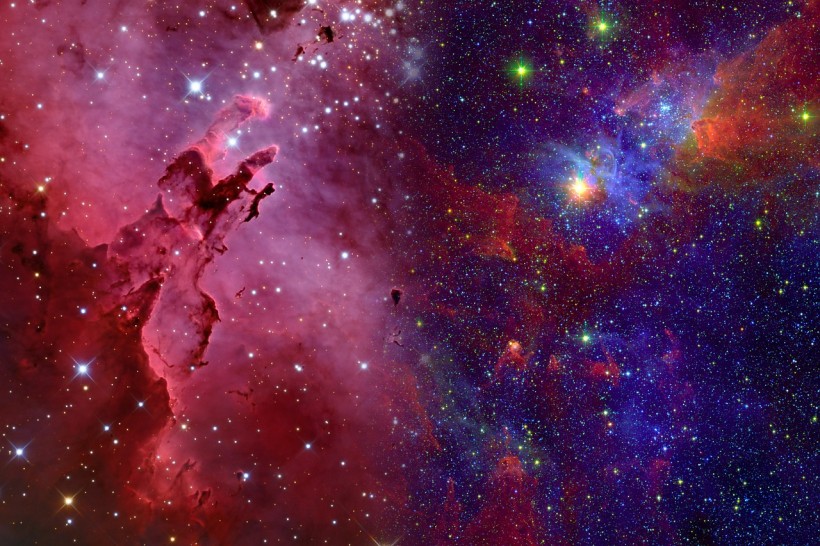An undergraduate student at the University of Massachusetts Amherst has just discovered new information on the connection between the development of stars and black holes.
The James Webb Space Telescope (JWST) will use Meredith Stone's most recent discoveries to better understand how galaxies function. Stone received his degree from the astronomy school at UMass Amherst in May this year. Her job is to assist scientists in solving a puzzle surrounding galaxy development.
Astronomers now understand what drives the development of galaxies, which involves two processes - star formation and the expansion of supermassive black holes in the galactic core.
"We know that galaxies grow, collide and change throughout their lives," Stone said per Space Daily. "We think that the two are linked and that they regulate each other, but until now, it's been very hard to see exactly how."
Stone carried out this study under the supervision of Alexandra Pope, an astronomy professor at the University of Massachusetts Amherst and senior author of a recent work published in The Astrophysical Journal.

James Webb Space Telescope May Have Found the Oldest Galaxy Ever That Existed 13.5 Billion Years Ago
ALSO READ: 'Black Hole Police' Finds First Ever Dormant Giant 160,000 Light Years Away From Milky Way
Space Dust Absorbs Galaxy Lights, Researchers Say
An undergraduate student at the University of Massachusetts Amherst has just discovered new information on the connection between the development of stars and black holes.
The James Webb Space Telescope (JWST) will use Meredith Stone's most recent discoveries to better understand how galaxies function. Stone received his degree from the astronomy school at UMass Amherst in May this year. Her job is to assist scientists in solving a puzzle surrounding galaxy development.
Astronomers now understand what drives the development of galaxies, which involves two processes - star formation and the expansion of supermassive black holes in the galactic core.
"We know that galaxies grow, collide and change throughout their lives," Stone said per Space Daily. "We think that the two are linked and that they regulate each other, but until now, it's been very hard to see exactly how."
Stone carried out this study under the supervision of Alexandra Pope, an astronomy professor at the University of Massachusetts Amherst and senior author of a recent work published in The Astrophysical Journal.
(Photo : Pixabay/spirit111)
James Webb Space Telescope May Have Found the Oldest Galaxy Ever That Existed 13.5 Billion Years Ago
ALSO READ: 'Black Hole Police' Finds First Ever Dormant Giant 160,000 Light Years Away From Milky Way
Space Dust Absorbs Galaxy Lights, Researchers Say
Understanding the interactions between black holes and stars has been difficult since we cannot directly witness them because they occur beneath huge clouds of galactic dust. Pope mentioned that dust can absorb more than 90 percent of the visible light emitted by galaxies actively producing stars. Additionally, this dust absorbs visible light.
However, there is a workaround: The dust warms up as it absorbs visible light. Although the human eye cannot perceive heat, infrared telescopes can.
To examine the mid-infrared wavelength range of some of the brightest galaxies close to Earth, the researcher used Spitzer Space Telescope's data obtained during the Great Observatories All-sky LIRG Survey (GOALS) mission, according to Interesting Engineering.
Then, the researcher looked for particular tell-tale tracers-the imprints of black holes and stars still growing.
The issue is that these fingerprints are so exceedingly faint that it is nearly difficult to distinguish them from the infrared noise background. Researchers claim they have calibrated these tracers' readings to make them more distinguishable.
With these improved perspectives, the researchers could see that star formation and black hole growth happen simultaneously in the same galaxies and appear to collide. Stone was able to ascertain the ratio that shows how the two phenomena are related.
Not only is this an amazing scientific development in and of itself. However, because of its exclusive access to light in the mid-infrared band, the JWST may also take advantage of the research to concentrate much more attentively on the unresolved issues. The explanation for the association between black holes and stars in the same galaxy is still a mystery, albeit it was estimated.
RELATED ARTICLE: NASA James Webb Space Telescope Shares Lovely, High-Resolution Photo Of Southern Ring Nebula
Check out more news and information on Space in Science Times.




![Earth's Quasi-Moon Kamo‘oalewa Could Originate From Lunar Surface Not Asteroid Belt [Study]](https://1721181113.rsc.cdn77.org/data/thumbs/full/53275/89/56/50/40/earths-quasi-moon-kamo-oalewa-could-originate-from-lunar-surface-not-asteroid-belt-study.png)









